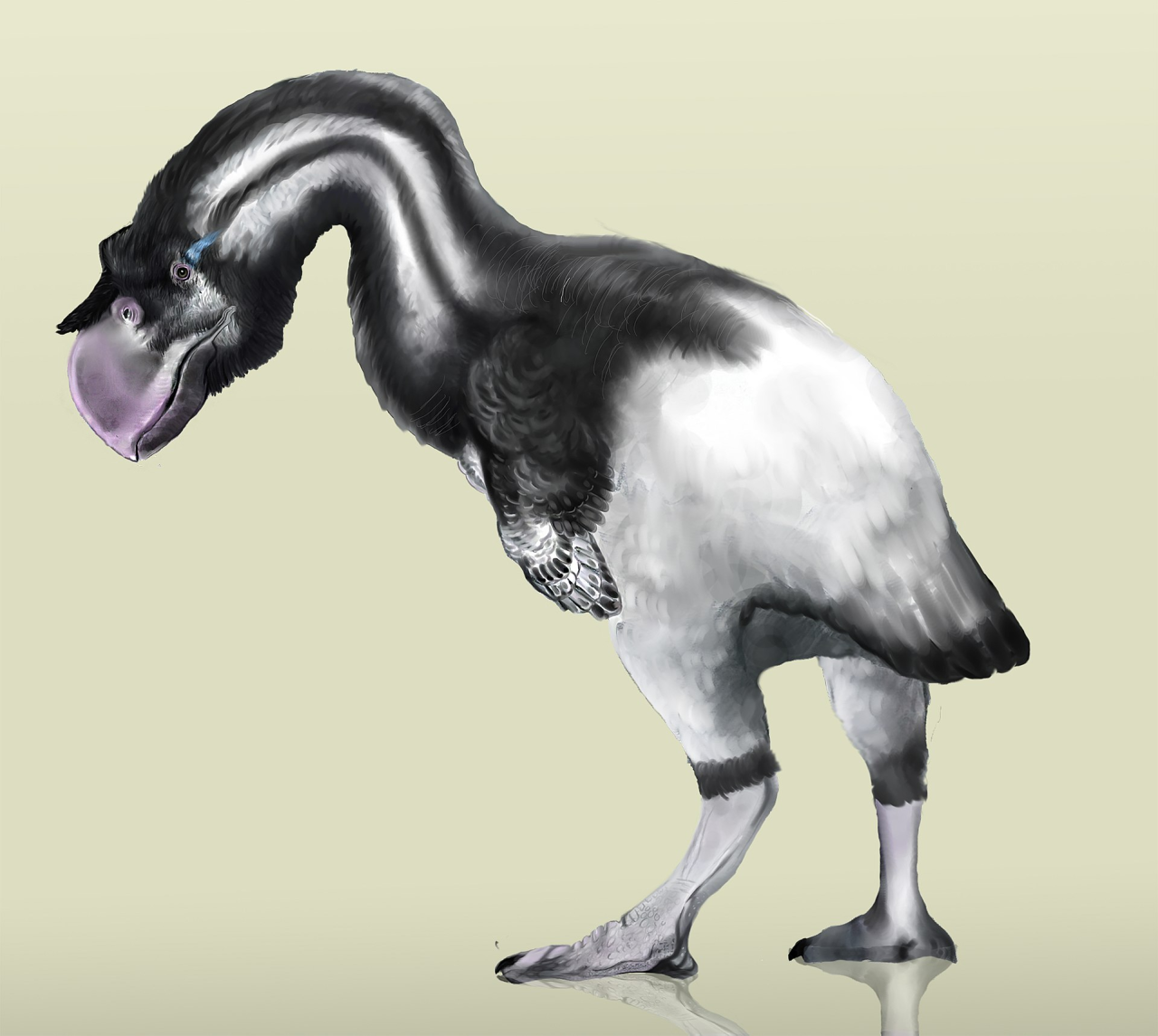Dromornis australis, D. murrayi, D. stirtoni

By Scott Reid on @drawingwithdinosaurs
Name: Dromornis australis, D. murrayi, D. stirtoni
Status: Extinct
First Described: 1872
Described By: Owen
Classification: Dinosauria, Saurischia, Eusaurischia, Theropoda, Neotheropoda, Averostra, Tetanurae, Orionides, Avetheropoda, Coelurosauria, Tyrannoraptora, Maniraptoriformes, Maniraptora, Pennaraptora, Paraves, Eumaniraptora, Averaptora, Avialae, Euavialae, Avebrevicauda, Pygostylia, Ornithothoraces, Euornithes, Ornithuromorpha, Ornithurae, Neornithes, Neognathae, Galloanserae, Anseriformes, Gastornithiformes, Dromornithidae
Dromornis is our first in the Galloanserae - the Fowl - and it is one of a group of large, flightless birds potentially closely related to Gastornis, but from Australia. The Dromornithids were very like Gastornis in many ways - they were megafauna, they had short, reduced wings, and they used their huge beaks to crack open fruit and chop down plants - not to eat meat. They also had gizzard stones in their stomachs to aid in breaking down plants, and they lived together in very large flocks - something predators don’t really do. As such, Dromornis and its relatives were common large herbivores throughout Australia, making up a major portion of the ecosystem. Dromornis itself is known from the Waite Formation, as well as Riversleigh, and as such it lived from about 28 to 5.3 million years ago, from the Chattian of the Oligocene to the Zanclean of the Pliocene, and it was probably found throughout Australia, besides those sites known.

By Daniel Goitom, CC BY-SA 4.0
Dromornis was about 3 meters tall and a very heavy bird, heavier than Moas and actually taller than Elephant Birds. It had strong, powerful legs, and probably wasn’t so much a runner as a kicker, and it used its large beak to chop through plants. It also had sexual dimorphism, with the males being more robust and heavy than females though, however, the females were often taller. It lived in open woodlands and forests, around places where water was permanently present, though the climate fluctuated often. Though they weren’t very good runners, their feet resembled hooves rather than claws, which would have given them a more sturdy surface while moving about the ground.
Sources:
https://en.wikipedia.org/wiki/Dromornithidae
https://en.wikipedia.org/wiki/Dromornis
Worthy, T. H., W. D. Handley, M. Archer, S. J. Hand. 2016. The extinct flightless mihirungs (Aves, Dromornithidae): cranial anatomy, a new species, and assessment of Oligo-Miocene lineage diversity. Journal of Vertebrate Paleontology














